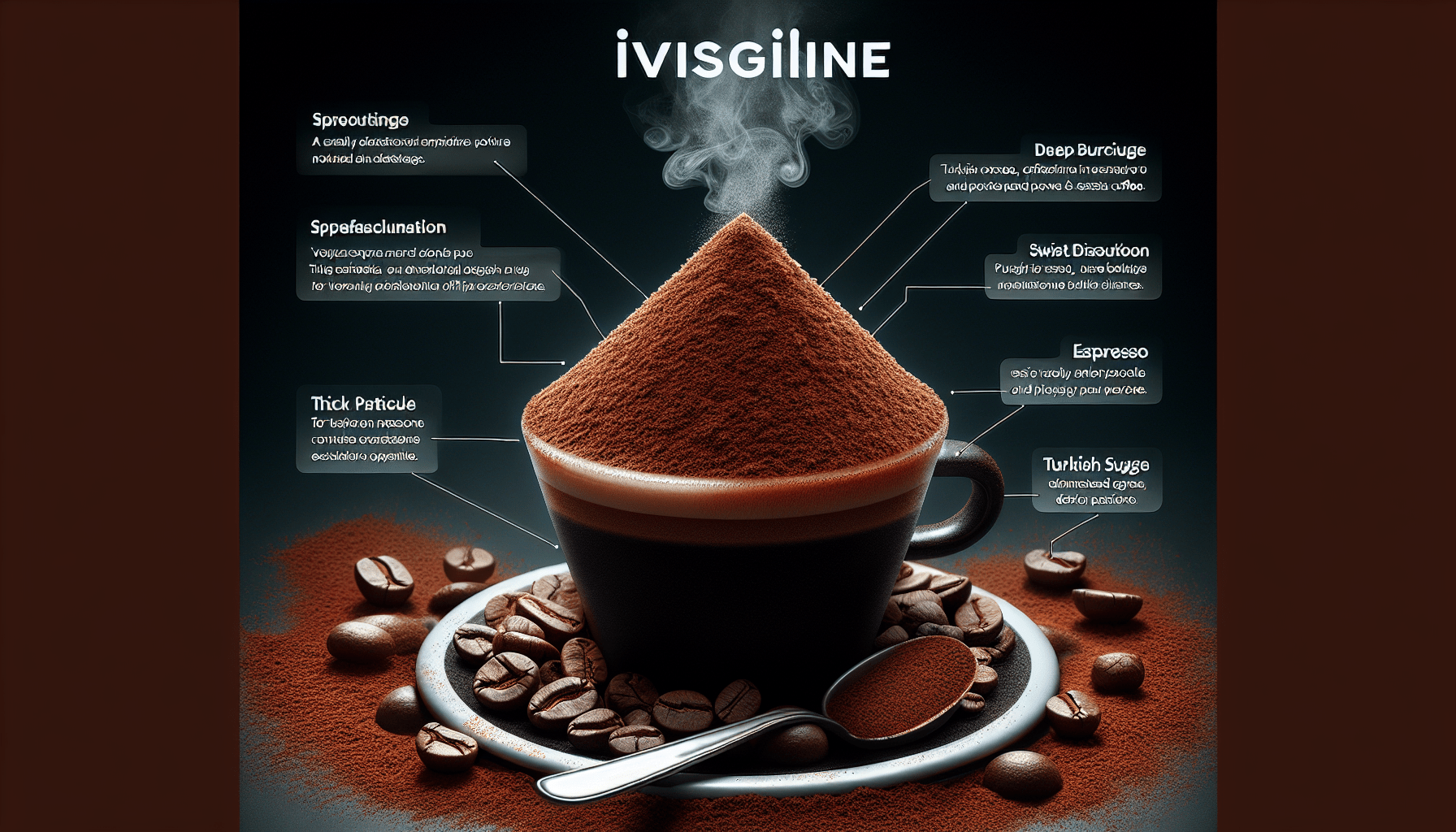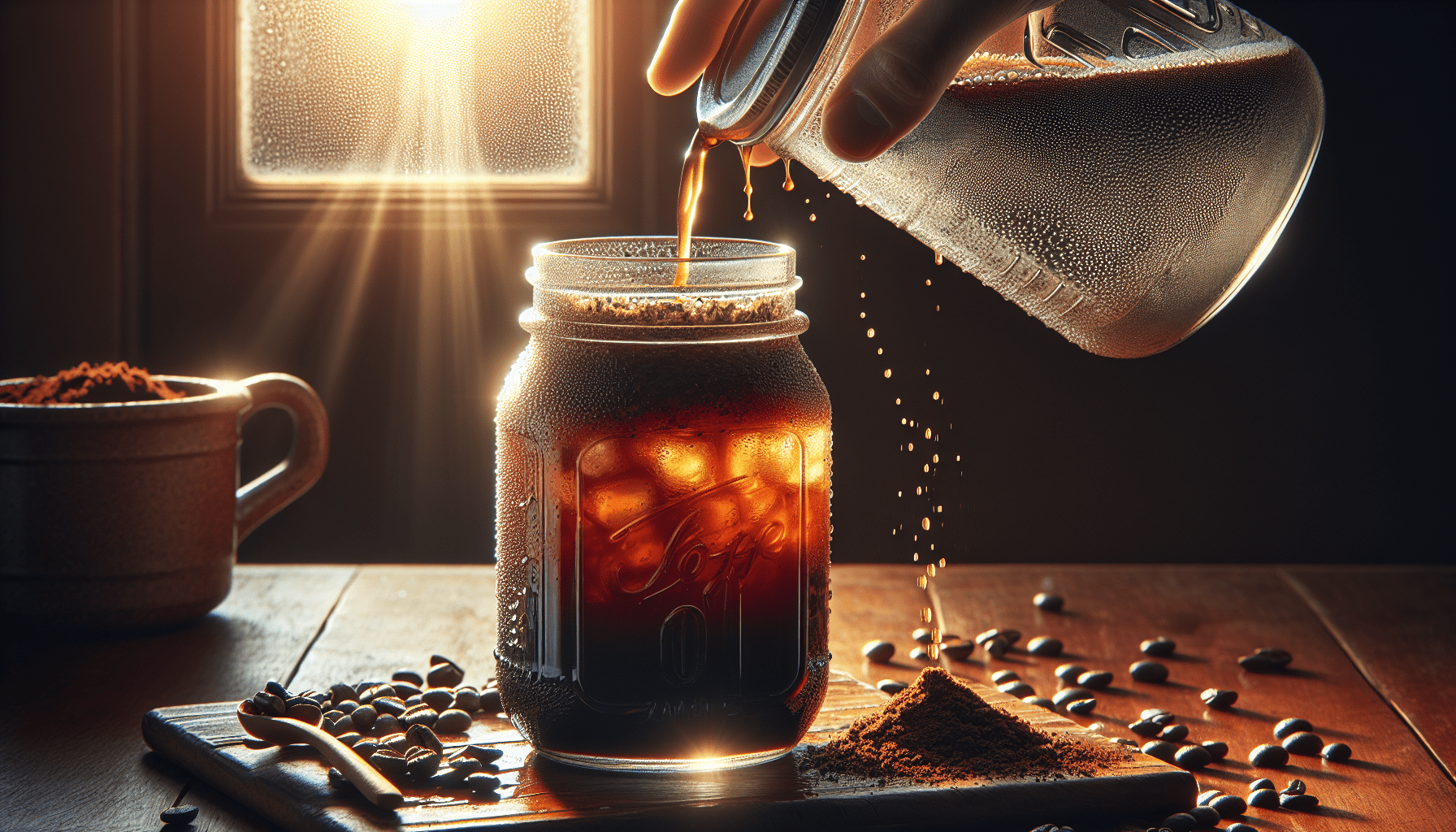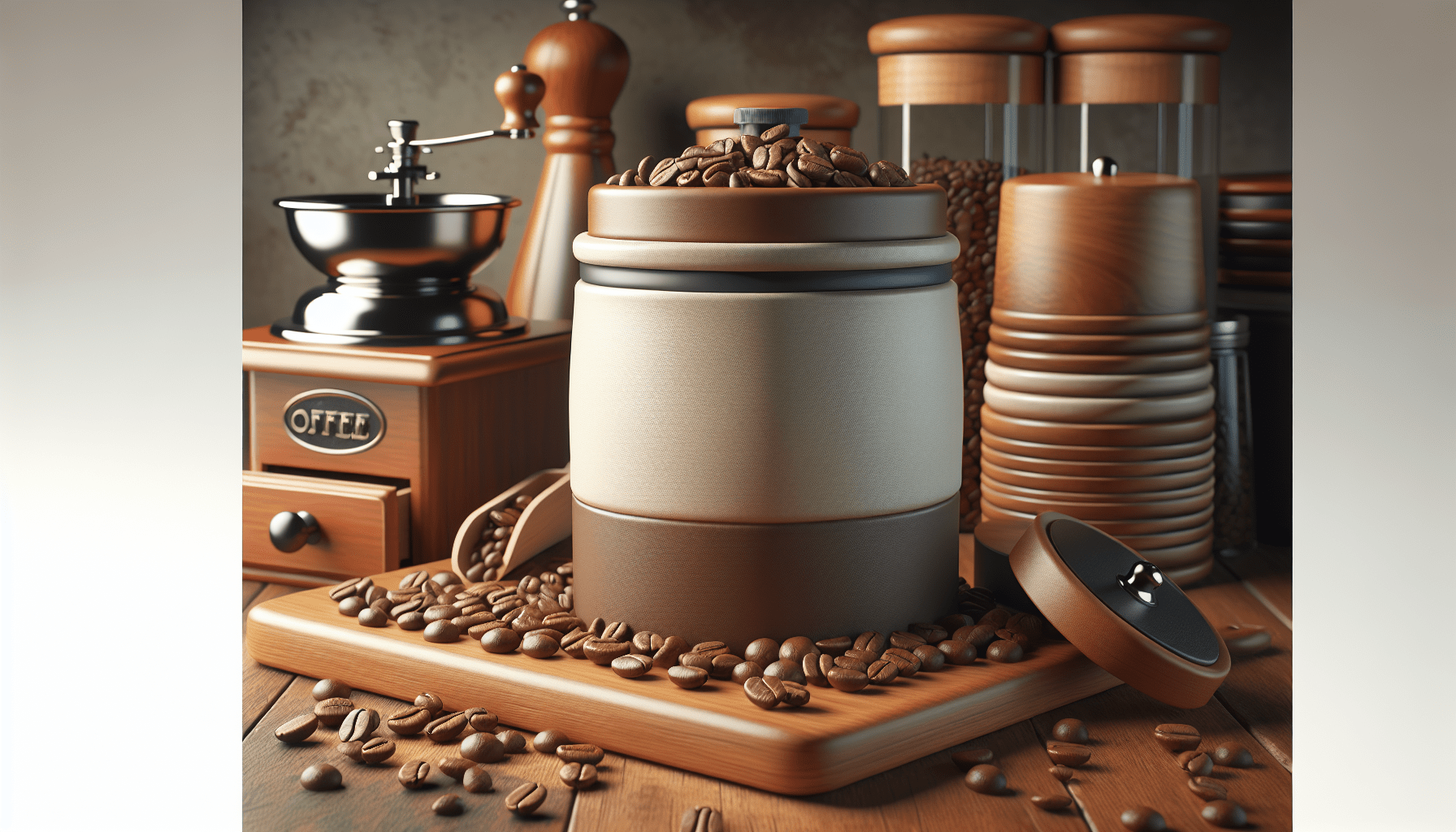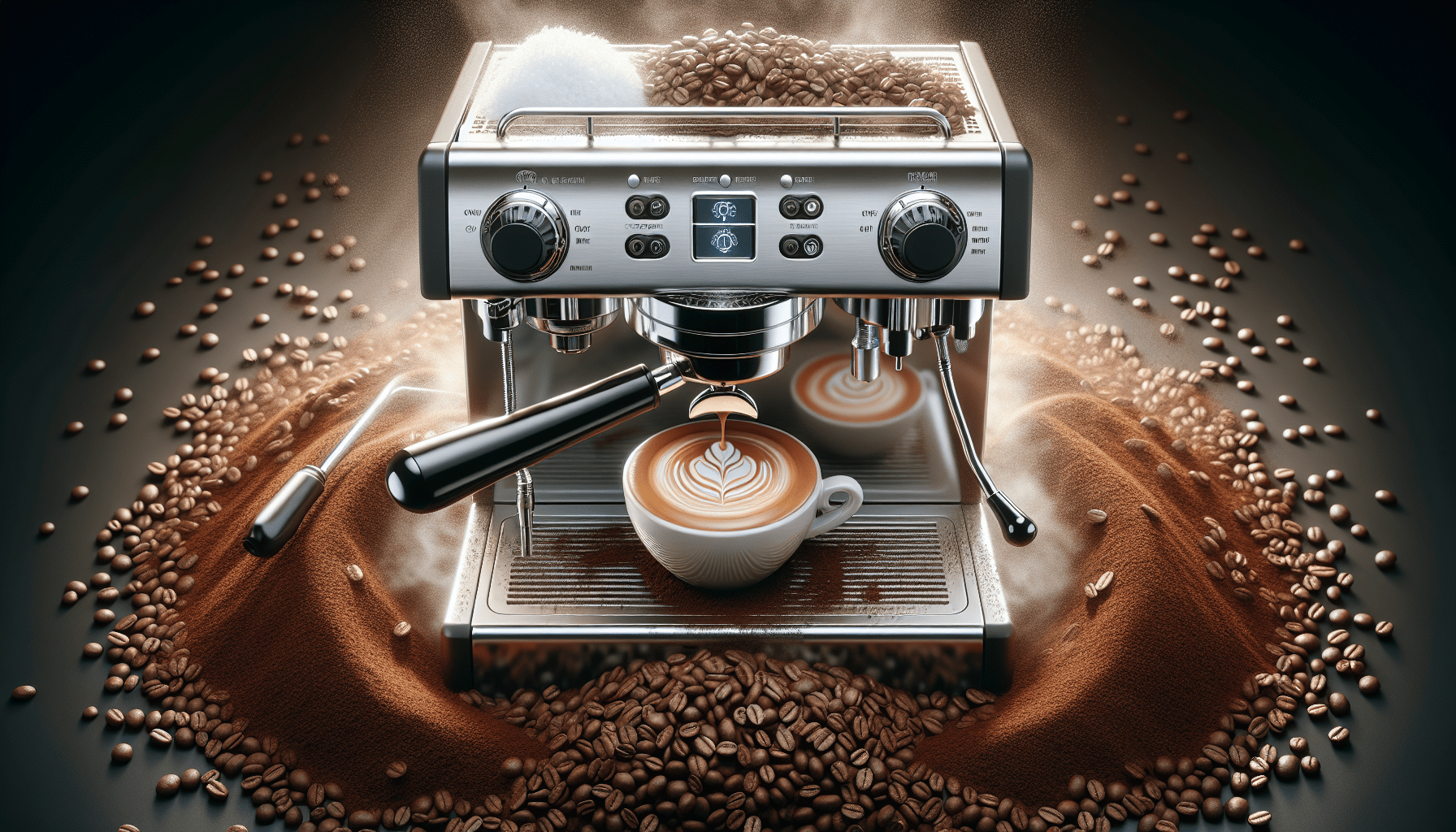Are you a coffee lover looking to perfect your home espresso brewing skills? Well, look no further because we have the answer to one of the most crucial questions in the world of coffee – what’s the best grind size for espresso? This small but mighty detail can make all the difference in achieving that perfect cup of rich and flavorful espresso that you crave. So, get ready to enhance your brewing experience as we uncover the secret to finding the ideal grind size for your beloved morning pick-me-up.
Importance of grind size for espresso
Impact on extraction
The grind size of coffee beans plays a crucial role in the extraction process when brewing espresso. The extraction refers to the process of dissolving and extracting the flavors, aromas, and oils from the coffee grounds. The size of the grind affects how quickly and efficiently the water interacts with the coffee, ultimately determining the taste and quality of the espresso shot.
Affects the taste
Grind size directly impacts the taste of espresso. When the grind size is too fine, it can lead to over-extraction, resulting in bitter and harsh flavors. On the other hand, if the grind size is too coarse, under-extraction occurs, leading to weak and sour flavors. Finding the right balance in grind size is essential for achieving a well-rounded and flavorful espresso shot.
Influences brewing time
The grind size also influences the brewing time of espresso. Finer grinds extract more quickly, leading to shorter brewing times. Conversely, coarser grinds take longer to extract, resulting in extended brewing times. It is important to consider the desired brewing time when adjusting the grind size to ensure optimal extraction and a consistent brewing experience.
Factors to consider when choosing grind size
Coffee beans
Different types of coffee beans have distinct characteristics that may require specific grind sizes for espresso. For example, a light roast may benefit from a slightly coarser grind, while a dark roast may require a finer grind. It is important to consider the origin and flavor profile of the coffee beans to determine the ideal grind size for espresso extraction.
Roast level
The roast level of coffee beans also plays a role in selecting the appropriate grind size. Lighter roasts tend to be denser and more delicate, requiring a finer grind to extract the flavors effectively. On the other hand, darker roasts are typically more porous, necessitating a coarser grind to avoid over-extraction. Understanding the roast level of the coffee beans is essential for achieving optimal extraction and flavor.
Brewing equipment
The type of espresso machine or brewing equipment being used is another critical factor to consider when choosing the grind size. Different machines have varying pressure settings and brewing mechanisms, which may require specific grind sizes to ensure proper extraction. It is advisable to consult the manufacturer’s instructions or experiment with different grind sizes to find the best fit for your specific brewing equipment.
Types of grind sizes for espresso
Extra fine
Extra fine grind size is nearly powdery and resembles fine sand. This grind size is commonly used for Turkish coffee but can also be suitable for espresso. However, caution must be exercised with this grind size as it can easily lead to over-extraction, resulting in a bitter and unpleasant taste.
Fine
Fine grind size is slightly coarser than extra fine and resembles table salt or sugar. This grind size is a popular choice for espresso because it allows for a balanced extraction, capturing the desired flavors and aromas without over-extraction or under-extraction. It produces a rich and flavorful espresso shot.
Medium-fine
Medium-fine grind size is coarser than fine but still finer than medium. It has a texture similar to gritty sand. This grind size is known to yield a sweeter and lighter espresso. However, it is important to note that the medium-fine grind size can be challenging to master as it is prone to under-extraction if brewed incorrectly.
Medium
Medium grind size is coarser than fine and medium-fine and resembles sea salt or sand. This grind size is often used in drip coffee machines but can also be suitable for espresso. It is known to produce a well-balanced and flavorful espresso shot with a medium body.
Coarse
Coarse grind size is the largest among the espresso grind sizes and resembles kosher salt or cracked peppercorns. While it is less commonly used for espresso, it can be suitable for certain brewing methods or personal preferences. However, it is crucial to note that a coarse grind size may result in under-extraction, producing a weak and watery espresso shot.
Effects of different grind sizes on espresso
Extra fine – Over-extraction
Using an extra fine grind size for espresso can lead to over-extraction. The finer particles of coffee grounds are more prone to releasing excessive amounts of bitter compounds into the espresso shot. This often results in a harsh and unpleasant taste, overpowering the desired flavors and leaving a bitter aftertaste.
Fine – Balanced extraction
A fine grind size is widely regarded as the most appropriate for espresso extraction. It allows for a balanced extraction, where the water interacts with the coffee grounds at an optimal rate, capturing the rich flavors and aromas without extracting excessive bitterness. A fine grind size produces a well-rounded and flavorful espresso shot with a good crema.
Medium-fine – Under-extraction
Using a medium-fine grind size for espresso extraction often leads to under-extraction. The coarser particles do not fully dissolve, resulting in an espresso shot that lacks body and flavor. It may taste sour and watery, failing to capture the full potential of the coffee beans.
Medium – Proper extraction
A medium grind size for espresso enables a proper extraction, striking a balance between under-extraction and over-extraction. It extracts the desired flavors and aromas effectively, resulting in a well-rounded and flavorful espresso shot. A medium grind size is a versatile option that suits different types of coffee beans and brewing preferences.
Coarse – Under-extraction
Choosing a coarse grind size for espresso often leads to under-extraction. The larger particles of coffee grounds do not dissolve fully, which limits the extraction of flavors and aromas. The resulting espresso shot may taste weak, lacking body and complexity. It is important to avoid using a coarse grind size unless specifically recommended for a particular brewing method or personal preference.
Finding the right grind size
Experimentation
Finding the perfect grind size for espresso often requires experimentation. It involves adjusting the grind size incrementally and observing the resulting flavors and brewing characteristics. By testing different grind sizes, you can determine the ideal setting that achieves optimal extraction and taste.
Adjusting based on taste
Taste should be the ultimate guide when adjusting the grind size for espresso. Begin with a recommended grind size based on the factors mentioned earlier, and then brew a shot. Taste the espresso and assess its characteristics. If it tastes bitter or over-extracted, try adjusting to a slightly coarser grind size. If it tastes weak or under-extracted, experiment with a finer grind size. Continuously adjust and taste until you find the perfect balance that suits your preferences.
Using a grinder with adjustable settings
Investing in a high-quality grinder with adjustable settings is highly recommended for brewing espresso. This allows you to precisely control the grind size and make small adjustments as needed. Grinders with stepped or stepless adjustments provide flexibility to find the exact grind size that yields the best results for your espresso brewing.
Benefits of using the correct grind size
Optimal extraction
Using the correct grind size for espresso ensures optimal extraction, where the water interacts with the coffee grounds in a way that captures the desired flavors and aromas without extracting excessive bitterness. This translates to a well-balanced and flavorful espresso shot that showcases the unique characteristics of the coffee beans.
Balanced flavors
The correct grind size enables a balanced extraction, resulting in a well-rounded flavor profile. It allows the sweetness, acidity, and bitterness of the coffee to harmonize, creating a complex and enjoyable espresso experience. Using the correct grind size maximizes the potential of the coffee beans and ensures a consistent and delightful espresso shot every time.
Consistent brewing time
Using a consistent grind size for espresso promotes a consistent brewing time. This allows for precise control over the extraction process, ensuring that each shot is brewed within the desired timeframe. Consistency in brewing time contributes to consistency in taste, making it easier to replicate and maintain the desired flavor profile.
Common mistakes with grind size for espresso
Using pre-ground coffee
One of the most common mistakes when it comes to grind size for espresso is using pre-ground coffee. Pre-ground coffee lacks freshness and often does not have the ideal grind size for espresso. It is recommended to grind coffee beans just before brewing to ensure the freshest and most appropriate grind size for optimal extraction and flavor.
Inconsistent grind size
Inconsistency in grind size can have a detrimental impact on espresso extraction. Uneven particles result in uneven extraction, leading to a shot that is both over-extracted and under-extracted at the same time. It is crucial to invest in a good quality grinder and ensure that the grind size is consistent to achieve the desired flavor and brewing results.
Ignoring the impact of grind size
Many espresso enthusiasts overlook the importance of grind size in achieving the perfect shot. They may focus on other factors such as coffee beans, roast level, or brewing techniques, but fail to recognize how grind size directly affects the taste and quality of the espresso. Understanding and adjusting the grind size is essential for achieving a consistently excellent cup of espresso.
Grinding for other espresso-based drinks
Grind size for cappuccinos
When preparing cappuccinos, it is generally recommended to use a slightly coarser grind size compared to a straight espresso shot. This allows for a slightly faster extraction, blending well with the steamed milk and producing a balanced and flavorful cappuccino.
Grind size for lattes
For lattes, a grind size similar to that used for a straight espresso shot is often suitable. The finer grind helps to achieve a well-balanced extraction, ensuring that the espresso flavor shines through the creamy milk. Experimentation and adjusting based on taste preferences are essential to find the perfect grind size for lattes.
Grind size for Americanos
Grinding for Americanos can follow a similar guideline as for straight espresso shots. Using a fine grind size allows for a balanced extraction while ensuring the flavors do not get diluted when hot water is added. The result is a rich and full-bodied Americano that showcases the flavors of the coffee.
Tips for grinding coffee for espresso
Invest in a good grinder
Investing in a high-quality grinder specifically designed for espresso is paramount to achieving optimal results. Burr grinders are particularly recommended as they produce a consistent grind size and allow for precise adjustment. Avoid blade grinders, as they tend to yield uneven particle sizes, leading to inconsistent extraction.
Grind just before brewing
To ensure the freshest and most flavorful espresso, it is crucial to grind the coffee beans just before brewing. Grinding coffee ahead of time exposes it to air, causing it to lose its aroma and flavors quickly. Grinding immediately before brewing preserves the freshness and enhances the quality of the resulting espresso.
Maintain a consistent grind size
Consistency is key when it comes to grinding coffee for espresso. Use a scale to measure the desired amount of coffee beans and ensure that the grind size remains consistent from shot to shot. This consistency allows for predictable and repeatable extraction, leading to a more enjoyable espresso experience.
Conclusion
The grind size for espresso is of utmost importance in achieving the perfect shot. It significantly impacts the flavor, extraction, and brewing process. By considering factors such as the coffee beans, roast level, and brewing equipment, one can determine the ideal grind size for espresso. Fine grind sizes generally yield balanced extractions, while adjusting based on taste preferences ensures a personalized and enjoyable espresso. Using the correct grind size unlocks the optimal extraction, balanced flavors, and consistent brewing time necessary for a delightful espresso experience. Avoiding common mistakes, such as using pre-ground coffee and maintaining consistency, further enhances the quality of espresso. Finally, understanding the grind size requirements for other espresso-based drinks and following tips for grinding coffee for espresso guarantees a versatile and satisfying preparation method. With the right knowledge and approach, you can master the art of grind size for espresso and consistently enjoy the perfect cup of espresso.




